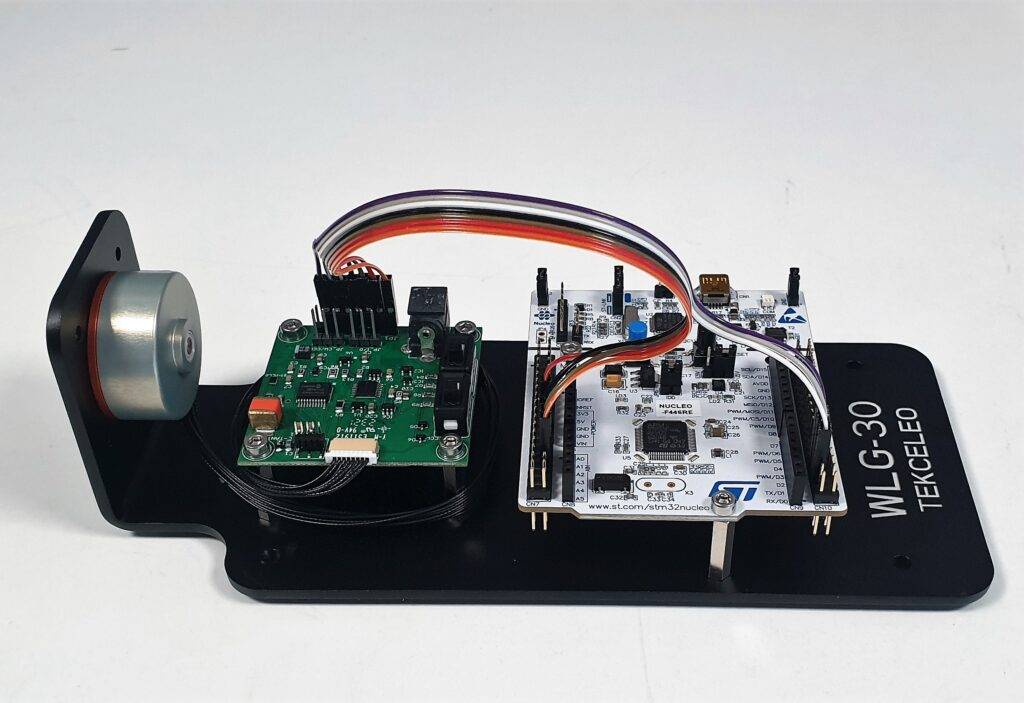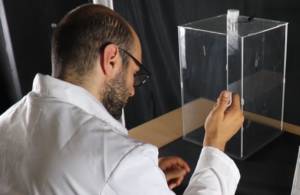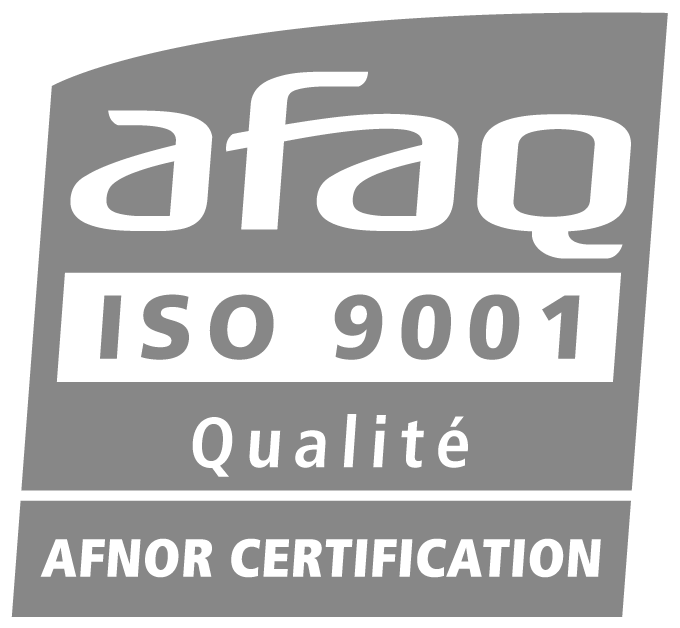In the landscape of rotary motors, engineers often find themselves at a crossroads when selecting the optimal technology for their applications. In this article, we will conduct a focused comparison between two distinctive categories within two main technology available: Piezoelectric Ultrasonic Motors (PUMs) represented by Travelling Wave USMs and Standing Wave USMs, and Electromagnetic Motors represented by Stepper Motors and Brushless Motors.
Comparison of Working Principles
The working principles of each motor category highlight the diversity of technologies for rotary motion. Piezoelectric Ultrasonic Motors leverage the piezoelectric effect and ultrasonic waves to achieve motion though friction and bending vibrations . Electromagnetic Motors, on the other hand, use electromagnetic induction for motion.
Piezoelectric Ultrasonic Motors
1. Travelling Wave USMs (same working principle than Tekceleo Wavelling Technology):
- Working Principle: Travelling wave ultrasonic motors utilize the piezoelectric effect and the generation of traveling ultrasonic waves. These motors consist of a piezoelectric element attached to a stator. When an alternating voltage is applied to the piezoelectric element, it generates ultrasonic waves that propagate along the stator surface. The interaction between these waves and a perfectly coupled rotor, creates a driving force, resulting in rotary motion. Travelling Waves motors use the vibrations on both stator and rotors to create motion with a greater performance and efficiency than any other piezo motors. In Travelling Wave technology the stator and rotors are mechanical objects, so the piezo ceramic is not in direct contact with motion itself, making it robust.
2. Standing Wave USMs:
- Working Principle: Standing wave ultrasonic motors also rely on the piezoelectric effect but generate standing ultrasonic waves. In this design, a piezoelectric element is affixed to the stator, creating a standing wave pattern on the stator surface. The rotor, typically a smooth ring, is positioned to interact with the standing wave. The resulting friction between the stator and rotor induces rotational motion. Standing Wave USM use the mechanical deformation of the ceramic stator, thus piezo ceramic is directly in contact with motion parts, making it more fragile in case of mechanical stress.
Electromagnetic Motors:
1. Stepper Motors:
- Working Principle: Stepper motors operate based on the electromagnetic induction principle. They consist of a rotor with teeth and a stator with coils. The stator coils are energized in a sequence, creating magnetic fields that attract the teeth of the rotor. By energizing the coils in a specific sequence, the rotor advances step by step, achieving precise angular displacement. Stepper motors are known for their ability to move in discrete steps, making them suitable for applications requiring precise control.
2. Brushless Motors:
- Working Principle: Brushless motors operate on the principle of magnetic fields and electromagnetic induction. They consist of a rotor with permanent magnets and a stator with coils. The coils are energized in a controlled sequence, producing a rotating magnetic field that interacts with the permanent magnets on the rotor. This interaction generates rotational motion without the need for physical brushes. Brushless motors offer smoother operation, higher efficiency, and longer lifespan compared to brushed motors.
Overview of each Technology for rotary motors below 70mm diameter
Piezoelectric Ultrasonic Motors:
1. Travelling Wave USMs:
- Speed Range: Travelling wave USMs are known to achieve quite good speed capabilities, often reaching speeds in the range of 0,5 to 500 RPM (Rotations Per Minute).
- Torque Output: While they offer moderate speed,, the focus of travelling wave USM is on high-torque-to-size applications, typically in the range of 0,03 N.m to 1,5 N.m. Travelling wave USM are low speed-high torque motor, the lesser the speed the higher the torque they can harvest.
- Precision: Travelling wave USMs are great in precision, providing fine control and accuracy, making them suitable for applications requiring intricate motion. They can achieve step of 20µrad. As they directly deliver high torque they do not need any reduction gears. They don’t have any backlash and offer great holding torque while non-powered. The great latency of control (<500 µs) make them very stable and precise in electronic control.
- Footprint: Their compact design and absence of traditional components make them ideal for applications where space is at a premium. They offer the greatest torque to size ratio of all the motors mentioned in this article. They are also very robust, as they can sustain higher torque without any damage to their internal structure.
- Environment of use : USMs do not use any electromagnetic effect, nor magnets and they can be made using only non-ferromagnetic materials. It made them suitable for harsh or complex environment where being non-magnetic is a premium : MRI, Calibration equipment, Stealth design, etc. On the same chapter, the material used are suitable for high vacuum, with no risk of degazing of materials, making them suitable for space and high-vacuum environment.
2. Standing Wave USMs:
- Speed Range: Standing wave USMs typically operate in the range of 0 to 60 RPM, offering a very low speed range, excluding any average or high speed application.
- Torque Output: With a torque range of 0,1 to 0,5 N.m, standing wave USMs are made for application where torque is not the main parameter. In general, these motors are not great for mechanical power output, with very low speed achievable and average torque.
- Precision: Similar to travelling wave USMs, standing wave USMs excel in precision, making them suitable for applications where accuracy is critical. Their core design makes them very for very precise step motion, with one of the best resolution possible in the motor landscape (step of 2-5 µrad).
- Footprint: standing wave USM offer very compact design, due to their working principles easily reproducible with few and small parts. However, they are fragile and can be easily broken if the torque applied is too much.
- Environment of use : USMs do not use any electromagnetic effect, nor magnets and they can be made using only non-ferromagnetic materials. It made them suitable for harsh or complex environment where being non-magnetic is a premium : MRI, Calibration equipment, Stealth design, etc. On the same chapter, the material used are suitable for high vacuum, with no risk of degazing of materials, making them suitable for space and high-vacuum environment.
Electromagnetic Motors:
1. Stepper Motors:
- Speed Range: Stepper motors within the specified size range typically operate at speeds ranging from 500 to 3,000 RPM.
- Torque Output: Stepper motors offer quite good torque characteristics, but lower than what can be expected from an ultrasonic motor, ranging from 0,05 to 0,6 Nm, making them suitable for applications with moderate torque requirements.
- Precision: Stepper motors provide average precise control, especially in open-loop systems, but may experience issues such as poor smoothness of rotation, mechanical noise and resonance problems. Stepper motors cannot reach as precise step than ultrasonic motors, without microstepping control their precision is average (0,18° max) and with microstepping, their torque fall from 70% of the nominal. The time response of electromagnetic motors can also be a problem, as they range from 10 to 100 ms.
- Footprint: Stepper motors have a compact design, making them suitable for applications where both space and precision are critical. They offer a good average solution when torque, speed and relatively poor precision is required.
- Environment of use : Electromagnetic motors use magnets and coil made of copper in order to operate. It is at their core physical principles. As a result they emit and are sensible to electromagnetic field, making them unsuitable for all kind of application : MRI, magnetic calibration, etc. It is the same for vacuum application, copper is highly sensitive to vacuum and will be altered in these kind of environment. However, it is possible to adapt EM motors to these environment by developing very specific casing in order to separate the core of the motors from the outside, but these casing are expensive and increase the complexity of integration.
2. Brushless Motors:
- Speed Range: Brushless motors offer a broad speed range, typically spanning from 1,000 to 8,000 RPM. They offer the highest speed possible.
- Torque Output: With torque output ranging from 0,05 to 0,2 Nm, brushless motors don’t have a high torque output. However, by adding reduction gear it is possible to use their high speed parameters to have a high torque output.
- Precision: Brushless motors don’t have a very good precision, the motor itself is not open-loop controlled and has no precision. However, by adding an encoder and reduction gear, a brushless motor can be precise, mostly thanks to the encoder precision. However, repeatability and accuracy are not great, due to backlash, inertia and latency of control.
- Footprint : brushless motors still maintain a reasonable footprint, offering a good compromise between size and performance. They can offer a small diameter, but their length can be quite long even in miniaturized version (even extended with the use of reduction gears).
- Environment of use : Electromagnetic motors use magnets and coil made of copper in order to operate. It is at their core physical principles. As a result they emit and are sensible to electromagnetic field, making them unsuitable for all kind of application : MRI, magnetic calibration, etc. It is the same for vacuum application, copper is highly sensitive to vacuum and will be altered in these kind of environment. However, it is possible to adapt EM motors to these environment by developing very specific casing in order to separate the core of the motors from the outside, but these casing are expensive and increase the complexity of integration.
Comparison between each technology :
1. Speed:
- Piezoelectric Ultrasonic Motors (Travelling Wave and Standing Wave): average speed capabilities, these motors offer a range of 0-500 RPM, which is quite modular. They can’t achieve the 8 000-10 000 RPM range. These motors are best for low speed use case, where they can be used in direct drive and show a very good precision and repeatability.
- Electromagnetic Motors (Stepper and Brushless): Stepper and brushless motors offer versatile speed ranges suitable for a variety of applications. They can achieve high speed, but start to become hard to control for relatively low speed application.
2. Torque:
- Piezoelectric Ultrasonic Motors (Travelling Wave and Standing Wave): In average, ultrasonic motors always provide a greater torque than EM motors compared to their size. Travelling wave motors, such as Tekceleo Wavelling range, provide a greater torque than the standing wave motors. They can reach torque in direct drive up to 1,5 Nm. USMs also provide a great holding torque when non-powered, which is great for positioning applications.
- Electromagnetic Motors (Stepper and Brushless): EM motors do no provide great torque when used in direct drive, their power output rely on a low torque/high speed characteristics. This apply for the range of motors compared (relatively small and miniature motors). For high torque application, these motors needs to be coupled with reduction gear, which increase backlash and wears.
3. Precision:
- Piezoelectric Ultrasonic Motors: Excellent precision, ideal for applications requiring fine control and accuracy. Travelling wave motors have the capacity to be driven by very precise steps (20-50µrad, without sacrificing torque and performances. Standing waves motors have an unmatched precision, but sacrifice speed and torque, making them a choice limited for application where mechanical power is not the main focus. USMs also provide an unmatched control latency in the motors landscape (<500 µs).
- Electromagnetic Motors (Stepper and Brushless): EM motors are less precise than piezo motors, especially brushless motors. Precision can be added by adding encoders and reduction gears, but is always limited by backlashes and latency of control. Stepper motors can be relatively precise, but in order to achieve such precision they sacrifice their torque capabilities, thus creating resonance, lack of smoothness and mechanical noises.
4. Footprint:
- Piezoelectric Ultrasonic Motors (Travelling Wave and Standing Wave): Compact design, efficient for applications with limited space. These motors can be very compact, due to the inherent capacity of their technologies to be miniaturized. With small parts they can deliver good performances, thus being very compact solution and easy to use in miniaturized conditions.
- Electromagnetic Motors (Stepper and Brushless): Maintain a reasonable footprint, suitable for applications where both size and performance are considerations. Stepper motors are quite hard to miniaturized passed some points (<40 mm diameter), on the other hand brushless motor can offer very small diameter (~11mm), but they still need to have a consequent length to operate. On average, these motors are way more difficult to miniaturize.
5. Environment of Use :
- Piezoelectric Ultrasonic Motors (Travelling Wave and Standing Wave): these motors are very good for specific environment where being non-magnetic or vacuum compatible is a necessity. However, standing waves motors are sensible to mechanical shocks and vibrations and cannot be suited for transport environment for example. Travelling wave motors, on the other hand, offer a good versatility of environment.
- Electromagnetic Motors (Stepper and Brushless): these motors are robust in terms of mechanical stress, and can sustain vibration and reasonable shocks. However, their working principles does not allow them to be used in non-magnetic or high vacuum environment.
Conclusion:
In the <70 mm diameter rotary motor category, the choice between Piezoelectric Ultrasonic Motors and Electromagnetic Motors hinges on the specific requirements of the application.
- If high power is needed with average torque and accuracy EM motors are a good choices. Their high speed capacity allow them to have an unmatched power output related to their size. However, they don’t offer good torque and rate stability for low speed/high torque requirements. As a result, engineers will need to add the right gearbox, backlash reduction and encoder, often resulting in more complex mechanical design. They offer average precision, due to their control mechanism and control latency. Stepper motors can provide better accuracy, but by sacrificing torque.
- For direct drive high torque/low speed and precise motion, ultrasonic motors are the best match in terms of miniaturized motors. Tekceleo travelling waves ultrasonic motors directly provide great torque-to-size ratio and great stability for low to average speed application. They are very compact and simple to use, due to their simple internal design. Compared to standing wave motor, Tekceleo’s motor can provide a great range of application due to their robustness and versatility. In terms of comparison, standing wave motors are not great for mechanical performances (very low speed and low torque) but are good for accurate positioning and not too stressful environment. On the opposite, travelling wave motors offer great torque and are great for long term operation and harsh environment.
As the landscape of motor technology provide a large variety of possibility, the key to making an informed decision lies in a deep understanding of the application’s demands and a careful consideration of the unique strengths and limitations of each motor technology. Do not hesitate to contact us to know more about what we can provide for your own application !




